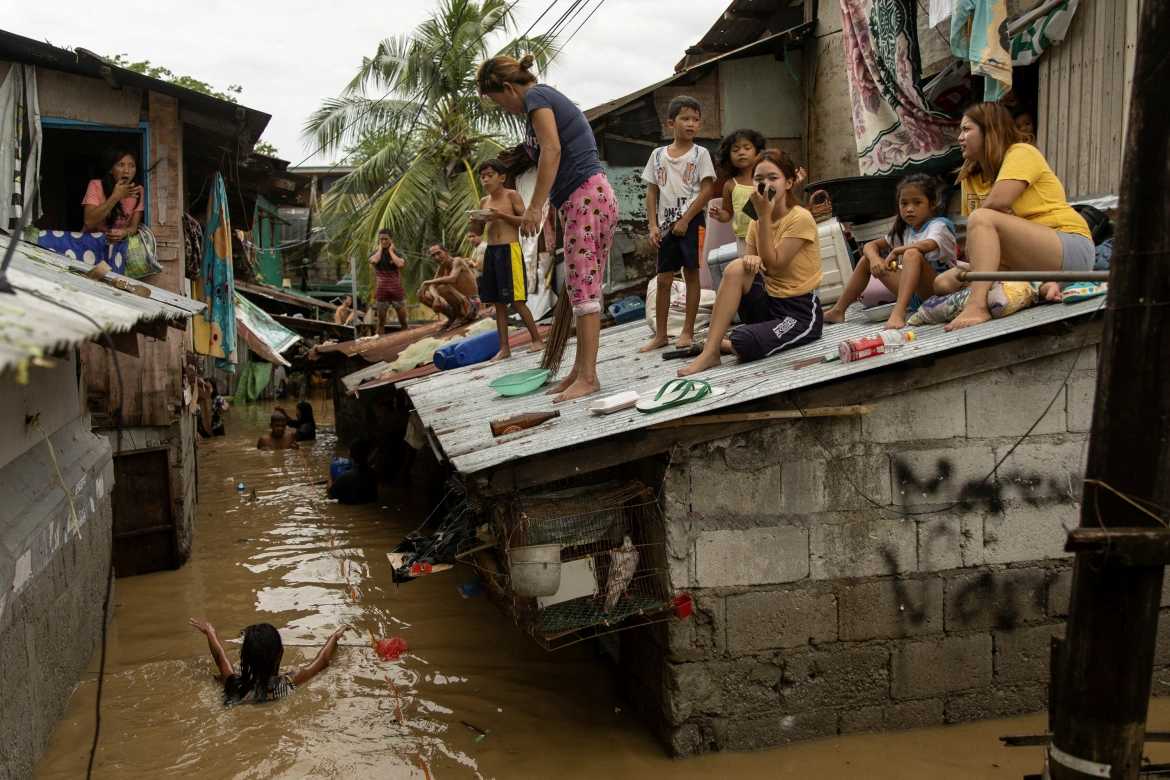Typhoon Noru kills at least five in northern Philippines

Typhoon Noru has blown out of the northern Philippines, leaving five rescuers dead, causing floods and power outages, and forcing officials to suspend classes and government work in the capital and outlying provinces.
The most powerful typhoon to hit the country this year slammed into the coast in Burdeos town in Quezon province before nightfall on Sunday, then weakened as it barreled overnight across the main Luzon region, where thousands of people moved to emergency shelters, some forcibly, officials said.
More than 17,000 people were moved to emergency shelters from high-risk communities prone to tidal surges, flooding and landslides in Quezon alone.
More than 3,000 people were evacuated to safety in Metropolitan Manila, which was lashed by fierce wind and rain overnight. Classes and government work were suspended Monday in the capital and outlying provinces as a precaution although the morning skies were sunny.
The entire northern provinces of Aurora and Nueva Ecija, which were hit by the typhoon, remained without power and repair crews were at work to bring back electricity, Energy Secretary Raphael Lotilla told President Ferdinand Marcos Jr in a televised meeting he called to assess the damage and coordinate a disaster-response.
About 20 storms and typhoons batter the Philippines each year. The archipelago also lies in the “Pacific Ring of Fire” – a region along most of the Pacific Ocean rim where many volcanic eruptions and earthquakes occur, making the Southeast Asian nation one of the world’s most disaster-prone.
In 2013, Typhoon Haiyan, one of the strongest recorded tropical cyclones in the world, left more than 7,300 people dead or missing, flattened entire villages, swept ships inland and displaced more than five million in the central Philippines – well to the south of Noru’s path.
